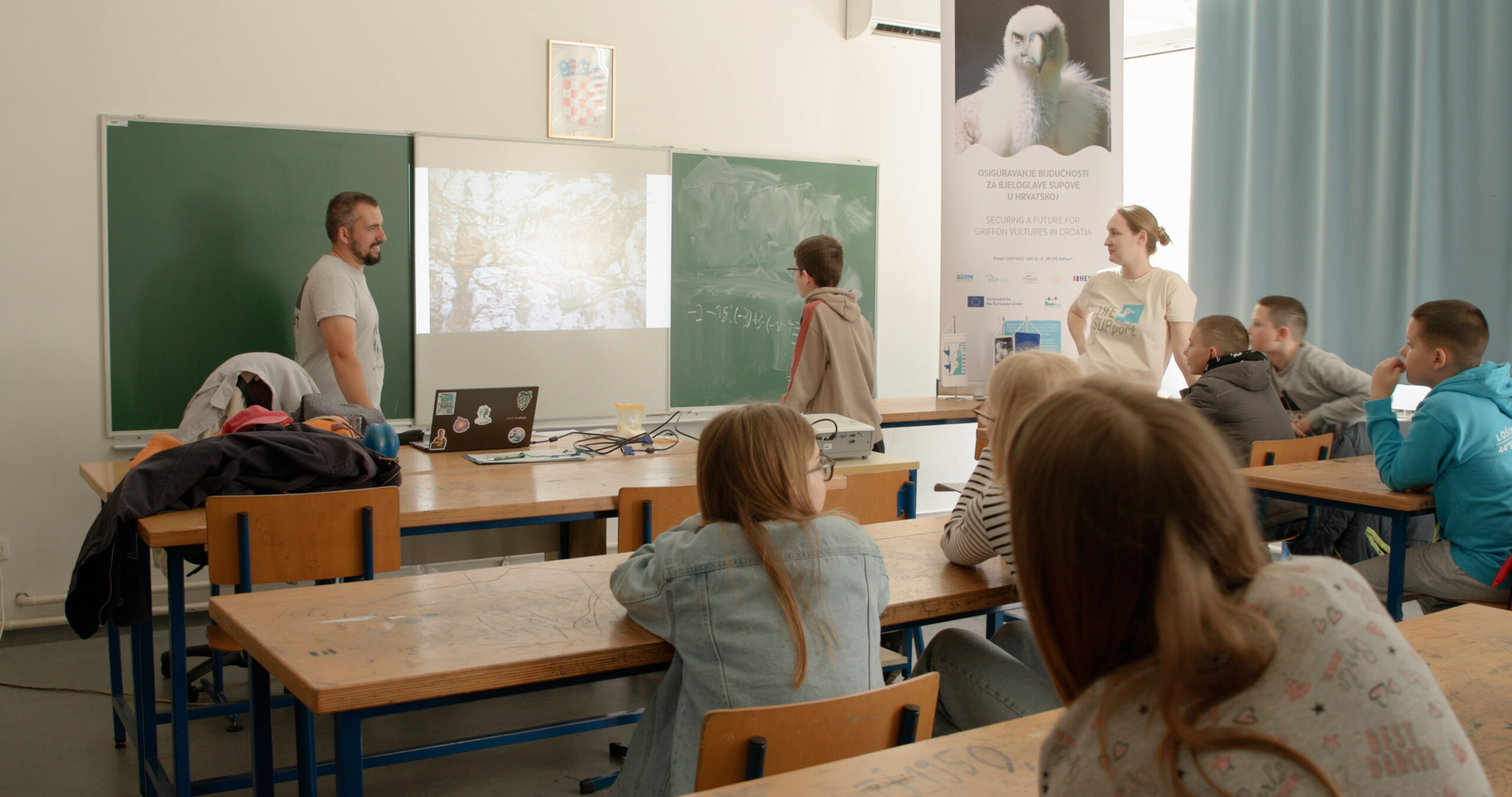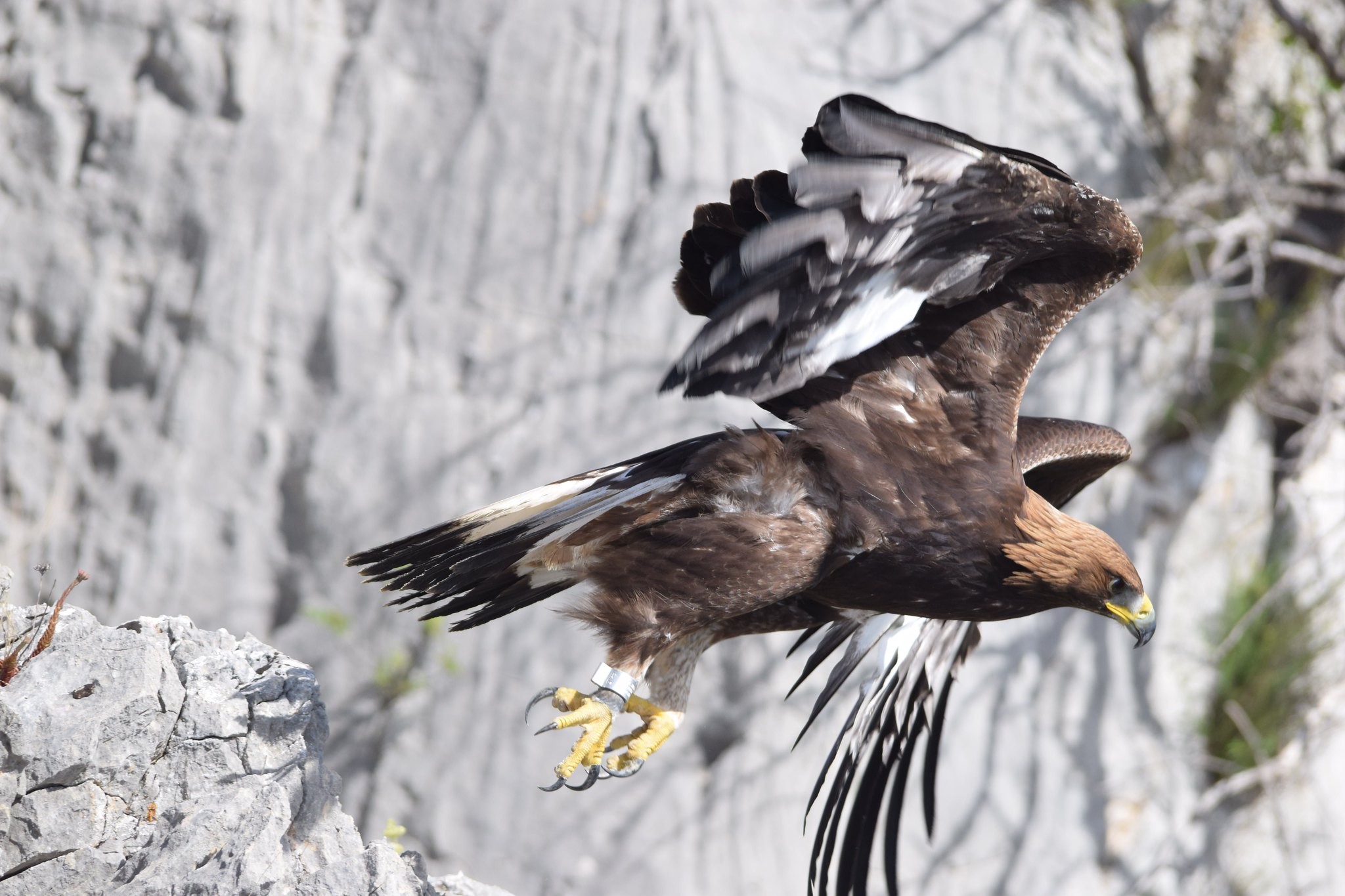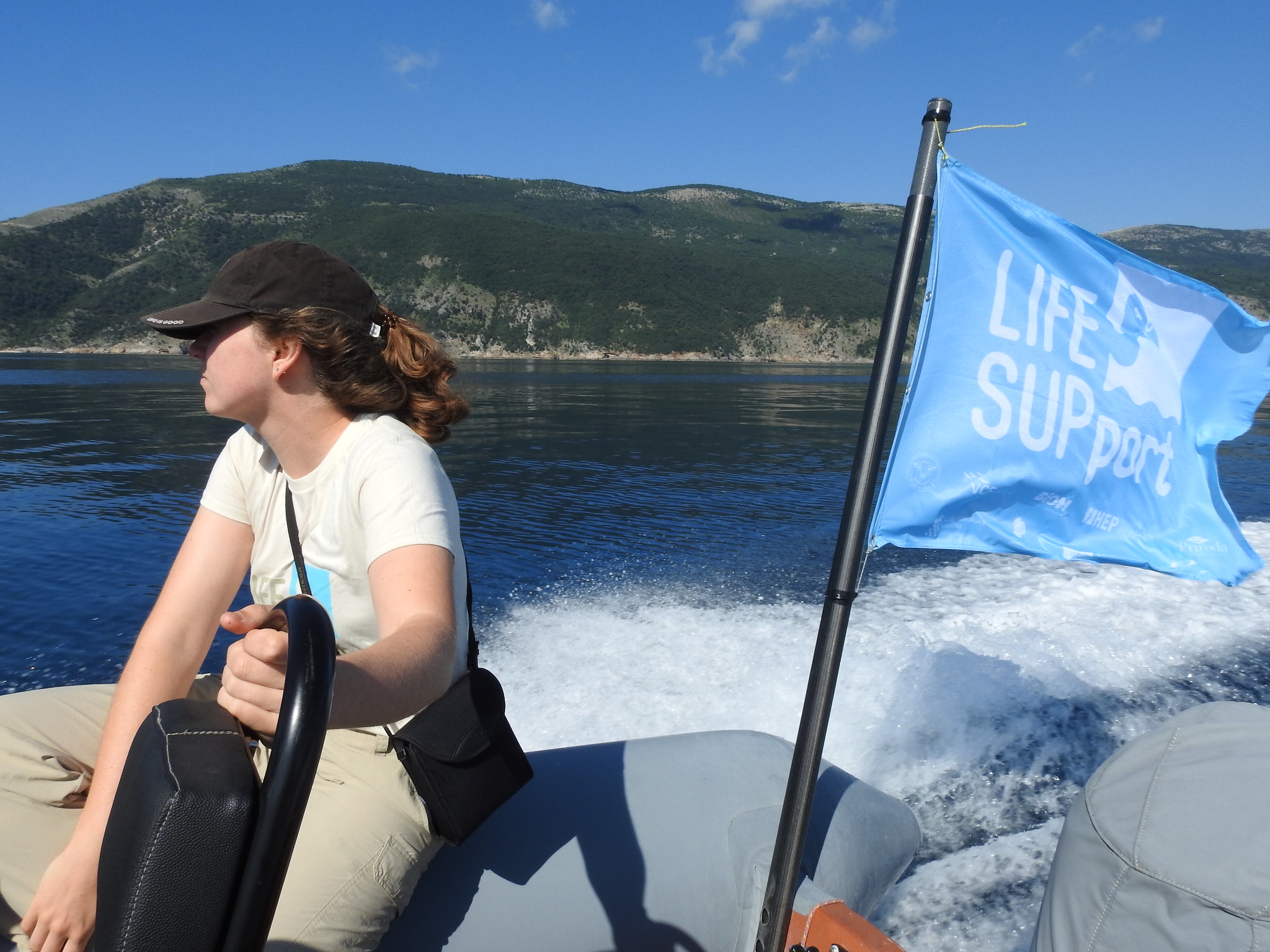A glimpse of the wildlife biologist’s life condensed in an extended weekend in the beautiful Lika Region. Together with two women in the wildlife part of the Croatian team of the Life Lynx project – Ivana Selanec and Ira Topličanec, I spent some time last December. This experience reminded me of the requirements and of the privileges of this type of job: being ready to travel, having a deep connection with the territory, and developing communication skills.
The weekend started earlier, on a Thursday, with an escape from the capital to reach Gospić and meet the public institutions involved in the project. The main aim of the project is to preserve the Dinaric-SE Alpine lynx population by the reintroduction of new individuals. The collaboration with the local authorities is critical in the conservation of widespread predators, and not just due to the workforce on the field. The meeting was a valuable opportunity to wrap up past experiences and share ideas about the upcoming challenges. Although I could understand just a few words in Croatian, it is always interesting to see how the stakeholders react and think.
Along this line, the following day we met another collaborator, a local hunter, in order to deliver him a new model of camera traps and explain its functioning. It was at times hard to keep the conversation from more appealing topics, like trucks’ brakes, but he was surely collaborative.
We had some time to enjoy Lika’s landscapes and cheese and arrange for the fieldwork ahead of us. Another critical point: anything can happen on the field, so it’s not a bad idea to be flexible, well organized, and have extra of everything!
 It was finally time for some action. The weather had graced us with enough white cover to do some snow tracking, a monitoring method usually combined with camera trapping. When the conditions are right, the snow is an incredibly useful ally. In essence, animals cannot hide their traces, which gives clues not only about the species, their movements, and number but also about their behavior and health. The cold snow helps to preserve other valuable pieces of information contained in urine, blood, or scats (which we did find, hooray!). At that moment, I didn’t know that would be the only snow I would see in this way too mild winter, making this experience even more precious.
Along with snow tracks, we visited some camera trap stations to gather data and check for lynx hairs and scats. Genetic information is particularly fundamental for this project and also to have a more precise estimation of the number of individuals dwelling in this region. The cameras and hair traps are usually placed in specific spots to which the predator may be attracted, such as old houses. It’s not unusual to find some cameras malfunctioning, stolen, or else, so you can never be too prepared.
After returning from the outdoors for dinner and some more logistics, we rested enough to try another monitoring method, this time not focused on the big cat. We used a couple of night hours for wolf/jackal howling. This practice consists in the imitation of the howling of these canids, which, if they respond, would give away their position. Howling, like the other methods, does require some experience and it is the most probably (but not only) the more naïve puppies that howl back during the summer.
The next day followed the same pattern, but this time we had the help of two local hunters, long time collaborators of the project and with a good knowledge of the territory.
It was finally time for some action. The weather had graced us with enough white cover to do some snow tracking, a monitoring method usually combined with camera trapping. When the conditions are right, the snow is an incredibly useful ally. In essence, animals cannot hide their traces, which gives clues not only about the species, their movements, and number but also about their behavior and health. The cold snow helps to preserve other valuable pieces of information contained in urine, blood, or scats (which we did find, hooray!). At that moment, I didn’t know that would be the only snow I would see in this way too mild winter, making this experience even more precious.
Along with snow tracks, we visited some camera trap stations to gather data and check for lynx hairs and scats. Genetic information is particularly fundamental for this project and also to have a more precise estimation of the number of individuals dwelling in this region. The cameras and hair traps are usually placed in specific spots to which the predator may be attracted, such as old houses. It’s not unusual to find some cameras malfunctioning, stolen, or else, so you can never be too prepared.
After returning from the outdoors for dinner and some more logistics, we rested enough to try another monitoring method, this time not focused on the big cat. We used a couple of night hours for wolf/jackal howling. This practice consists in the imitation of the howling of these canids, which, if they respond, would give away their position. Howling, like the other methods, does require some experience and it is the most probably (but not only) the more naïve puppies that howl back during the summer.
The next day followed the same pattern, but this time we had the help of two local hunters, long time collaborators of the project and with a good knowledge of the territory.
 We closed this fieldwork session with a second meeting with stakeholders. This time the atmosphere was a tad tenser, as the aim of the evening was to secure the collaboration of local hunters for the next lynx reintroduction. The human dimension is, in fact, fundamental when it comes to not always welcomed animals like large carnivores, like Aldo Leopold, the father of wildlife conservation, remarked often. We exchanged ideas and opinions, and by the end of the meeting, we could enjoy a fulfilling dinner (including food in a partnership is always a good idea!).
It was then time to head back to the city, with new data and hope for the future challenges of the project.
We closed this fieldwork session with a second meeting with stakeholders. This time the atmosphere was a tad tenser, as the aim of the evening was to secure the collaboration of local hunters for the next lynx reintroduction. The human dimension is, in fact, fundamental when it comes to not always welcomed animals like large carnivores, like Aldo Leopold, the father of wildlife conservation, remarked often. We exchanged ideas and opinions, and by the end of the meeting, we could enjoy a fulfilling dinner (including food in a partnership is always a good idea!).
It was then time to head back to the city, with new data and hope for the future challenges of the project.
 A special thanks to Ivana Selanec to for the pictures!
A special thanks to Ivana Selanec to for the pictures!
Author: Michelle Pozzini, student and soon to be a conservation biologist
 It was finally time for some action. The weather had graced us with enough white cover to do some snow tracking, a monitoring method usually combined with camera trapping. When the conditions are right, the snow is an incredibly useful ally. In essence, animals cannot hide their traces, which gives clues not only about the species, their movements, and number but also about their behavior and health. The cold snow helps to preserve other valuable pieces of information contained in urine, blood, or scats (which we did find, hooray!). At that moment, I didn’t know that would be the only snow I would see in this way too mild winter, making this experience even more precious.
Along with snow tracks, we visited some camera trap stations to gather data and check for lynx hairs and scats. Genetic information is particularly fundamental for this project and also to have a more precise estimation of the number of individuals dwelling in this region. The cameras and hair traps are usually placed in specific spots to which the predator may be attracted, such as old houses. It’s not unusual to find some cameras malfunctioning, stolen, or else, so you can never be too prepared.
After returning from the outdoors for dinner and some more logistics, we rested enough to try another monitoring method, this time not focused on the big cat. We used a couple of night hours for wolf/jackal howling. This practice consists in the imitation of the howling of these canids, which, if they respond, would give away their position. Howling, like the other methods, does require some experience and it is the most probably (but not only) the more naïve puppies that howl back during the summer.
The next day followed the same pattern, but this time we had the help of two local hunters, long time collaborators of the project and with a good knowledge of the territory.
It was finally time for some action. The weather had graced us with enough white cover to do some snow tracking, a monitoring method usually combined with camera trapping. When the conditions are right, the snow is an incredibly useful ally. In essence, animals cannot hide their traces, which gives clues not only about the species, their movements, and number but also about their behavior and health. The cold snow helps to preserve other valuable pieces of information contained in urine, blood, or scats (which we did find, hooray!). At that moment, I didn’t know that would be the only snow I would see in this way too mild winter, making this experience even more precious.
Along with snow tracks, we visited some camera trap stations to gather data and check for lynx hairs and scats. Genetic information is particularly fundamental for this project and also to have a more precise estimation of the number of individuals dwelling in this region. The cameras and hair traps are usually placed in specific spots to which the predator may be attracted, such as old houses. It’s not unusual to find some cameras malfunctioning, stolen, or else, so you can never be too prepared.
After returning from the outdoors for dinner and some more logistics, we rested enough to try another monitoring method, this time not focused on the big cat. We used a couple of night hours for wolf/jackal howling. This practice consists in the imitation of the howling of these canids, which, if they respond, would give away their position. Howling, like the other methods, does require some experience and it is the most probably (but not only) the more naïve puppies that howl back during the summer.
The next day followed the same pattern, but this time we had the help of two local hunters, long time collaborators of the project and with a good knowledge of the territory.
 We closed this fieldwork session with a second meeting with stakeholders. This time the atmosphere was a tad tenser, as the aim of the evening was to secure the collaboration of local hunters for the next lynx reintroduction. The human dimension is, in fact, fundamental when it comes to not always welcomed animals like large carnivores, like Aldo Leopold, the father of wildlife conservation, remarked often. We exchanged ideas and opinions, and by the end of the meeting, we could enjoy a fulfilling dinner (including food in a partnership is always a good idea!).
It was then time to head back to the city, with new data and hope for the future challenges of the project.
We closed this fieldwork session with a second meeting with stakeholders. This time the atmosphere was a tad tenser, as the aim of the evening was to secure the collaboration of local hunters for the next lynx reintroduction. The human dimension is, in fact, fundamental when it comes to not always welcomed animals like large carnivores, like Aldo Leopold, the father of wildlife conservation, remarked often. We exchanged ideas and opinions, and by the end of the meeting, we could enjoy a fulfilling dinner (including food in a partnership is always a good idea!).
It was then time to head back to the city, with new data and hope for the future challenges of the project.
 A special thanks to Ivana Selanec to for the pictures!
Author: Michelle Pozzini, student and soon to be a conservation biologist
A special thanks to Ivana Selanec to for the pictures!
Author: Michelle Pozzini, student and soon to be a conservation biologist






